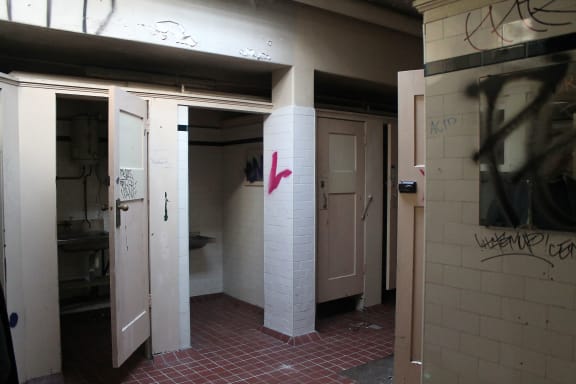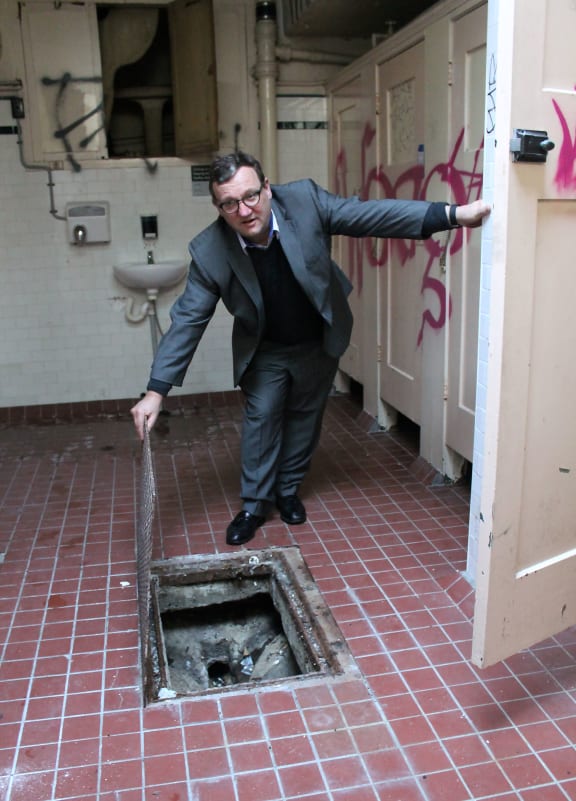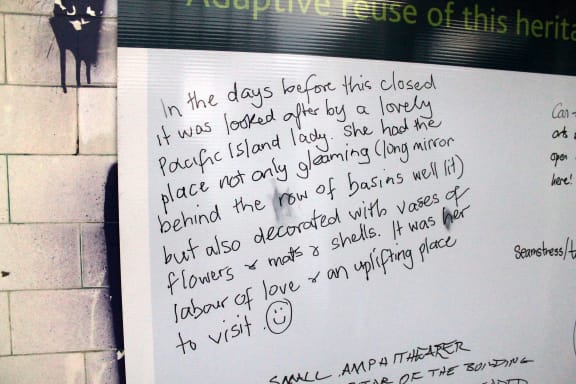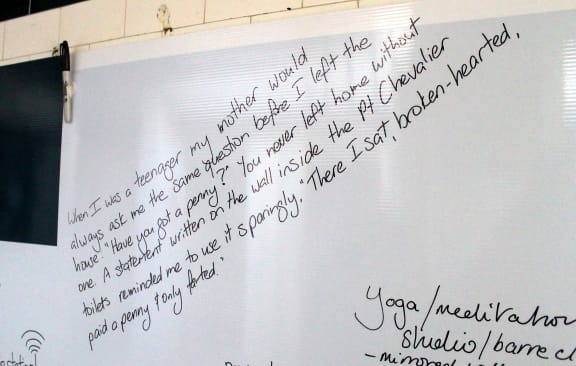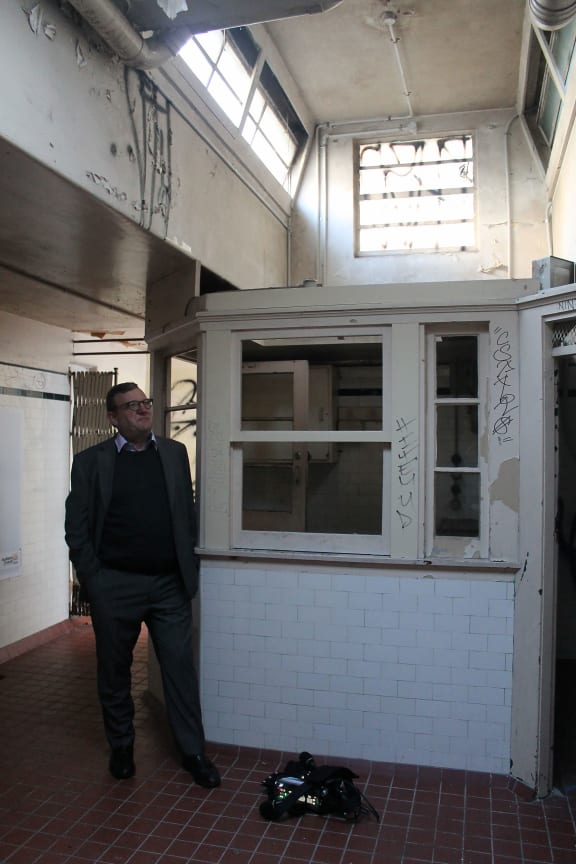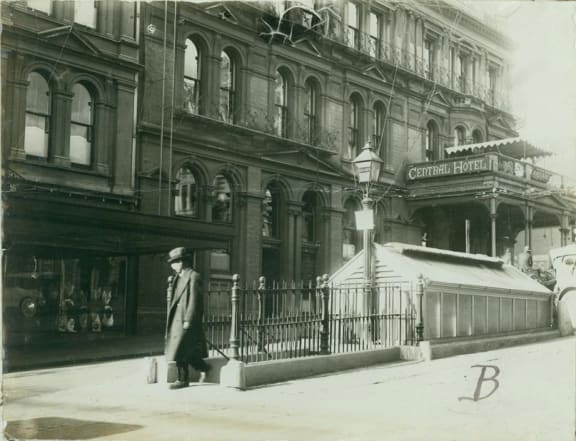“Here I sit, broken hearted, paid a penny and only farted” – old toilet graffiti from the time women had to pay a penny to use public conveniences.
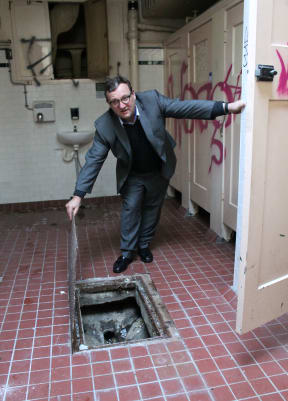
Ian Reid from Auckland Council’s property team, holding open the lid to expose the original sewer under the now-closed Wellesley Street East women’s conveniences. Photo: RNZ/Lisa Thompson
Auckland Council is hoping developers will breathe new life into a handful of disused heritage toilets around the city.
While the facilities are outdated and dilapidated, they still retain a number of original aspects which Ian Reid, from the Council’s property team, hopes will be included in new refits.
“That’s part of the requirements we’re working through, to try and make it something that Aucklanders can see their history in,” he says.
And many might not be aware of just how large the role the development of the city’s public conveniences has played in the economic, social and sexual history of the city.
Founded in 1840, Auckland quickly expanded from a small settlement of about 2,500 people to a bustling centre of trade boasting 12-thousand or so inhabitants by 1860. Reclamation work around Auckland’s foreshore began in earnest and the port provided an important commercial and shipping centre that linked the timber miller and gum digger with international traders.
Only one thing was missing however: public conveniences. This was rectified in 1863 with the opening of a water closet and urinal on the Queen Street Wharf. The facilities were so well received that over the next five years, urinals were planned or constructed on eight additional inner-city sites. And it was all in the name of increasing levels of public decency.
While the number of men’s facilities continued to increase in numbers, it was to be nearly half a century before women were offered some relief from being caught short in the central city. The Council assumed that local shops would provide women with rest rooms as it thought they would be less inclined to use standalone facilities.
However, Auckland women’s groups began to call for public toilets in earnest around 1909 after the Town Hall was completed with provision for men’s facilities only. During the 1910s, women needing to relieve themselves in the city-centre could use the public library, Smith and Caughey’s or travel up to the corner of Grafton Bridge and Symonds Street, where the first stand-alone toilet was finally opened in 1910.
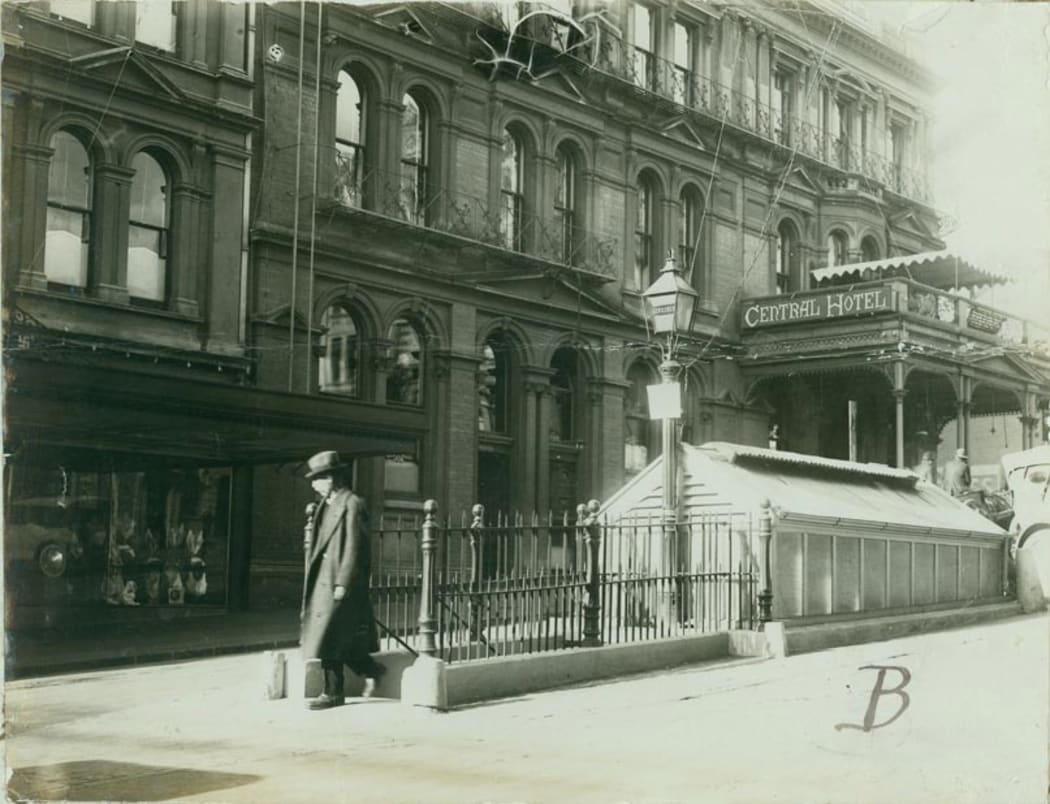
Victoria Street East – A man steps out of an underground public convenience on Auckland’s Victoria Street East circa 1920. Photo: Puke Ariki – ARC2013-1217
By 1938 there were over 47 separate public conveniences in Auckland city. And many more were erected beside tram-stops as the city’s population radiated out into the suburbs. And while they were well patronised, the city’s public conveniences also provided opportunities for the darker side of the city's life to surface. The public toilets were used as a place for bag-snatchers to store goods for later retrieval. They were also used for sexual liaisons and while closures were enforced, it did not stop beatings and blackmail from being common occurrences.
During World War Two, the Wyndham Street attendant also noted that women and girls often enticed servicemen into the restrooms for sex in rewards for cash, alcohol or just for fun. But as Ian Reid notes, it’s all part of the city’s history. A history the Council is hoping will get a new lease of life. It's called for expressions of interest from businesses and community groups in the private sector to lease and redevelop five of the now closed heritage toilets. And while the Council is asking for “innovative ideas”, Ian says he’s hoping the heritage aspects of each building won’t be forgotten.
Listen to Lisa Thompson lift the lid on Auckland's heritage toilets.
